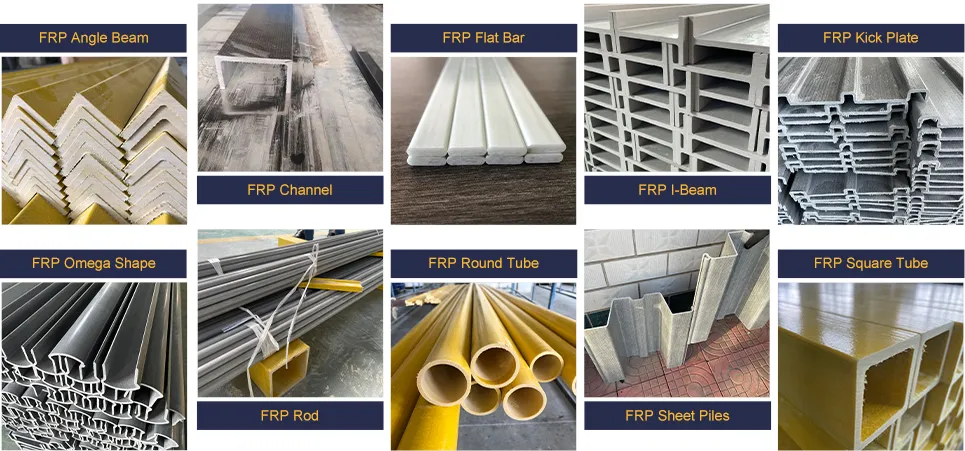loading...
- No. 9, Xingyuan South Street, Dongwaihuan Road, Zaoqiang County, Hengshui, Hebei, China
- admin@zjcomposites.com
- +86 15097380338
- Welcome to visit our website!
sand filter frp
Sand Filter FRP An Overview of Its Importance and Applications
In recent years, the use of glass fiber reinforced plastic (FRP) in various industrial applications has gained significant traction, particularly in the field of water treatment. Among the many technologies employed for this purpose, sand filters made from FRP have emerged as a crucial component in ensuring clean and safe water. This article explores the features, advantages, and applications of sand filters FRP.
Understanding Sand Filters
Sand filters are a common solution in the treatment of water, utilized to remove suspended solids and impurities. They operate on a simple principle where water flows through a bed of sand, allowing larger particles to be trapped in the granular media while the purified water passes through. Traditionally, these filters were made from concrete or metal, but the adoption of FRP has revolutionized their design and functionality.
What is FRP?
Fiber Reinforced Plastic (FRP) is a composite material made from a polymer matrix reinforced with fibers, typically glass fibers. This combination imparts several properties to FRP products, including lightweight, high strength, corrosion resistance, and thermal stability. These attributes make FRP an ideal material for constructing sand filters, especially in harsh environmental conditions.
Advantages of Sand Filter FRP
1. Corrosion Resistance One of the most significant benefits of using FRP for sand filters is its resistance to corrosion. Unlike traditional materials, FRP does not rust or corrode when exposed to water and various chemicals, increasing the longevity of the equipment.
2. Lightweight FRP is significantly lighter than concrete or metal alternatives. This characteristic simplifies transportation, installation, and maintenance, making it an appealing choice for many applications.
3. High Strength and Durability Despite its lightweight nature, FRP is remarkably strong. It can withstand high pressure and temperatures, ensuring reliable performance in demanding environments.
sand filter frp

4. Cost-Effective While the initial investment for FRP sand filters may be higher, their durability and low maintenance requirements often lead to reduced lifetime costs. This makes them a cost-effective solution in the long run.
5. Versatility Sand filters made of FRP can be customized to fit various sizes and configurations, making them suitable for a wide range of applications, from municipal water treatment plants to industrial processes.
Applications of Sand Filter FRP
The versatility of sand filter FRP allows it to be used across multiple sectors
- Water Treatment Plants Municipalities use sand filters for their efficiency in removing impurities from drinking water, ensuring compliance with health standards. - Wastewater Management Industrial facilities often integrate FRP sand filters in their wastewater treatment systems to enhance the quality of effluent before discharge into the environment.
- Recreational Facilities Swimming pools and spas utilize sand filters to maintain clean and clear water for users, providing a safe recreational environment.
- Agriculture In irrigation systems, FRP sand filters are essential for ensuring that water is free from debris and sediment, promoting healthy crop growth.
Conclusion
Sand filters FRP represent a significant advancement in water treatment technology, combining durability, efficiency, and cost-effectiveness. As industries increasingly prioritize sustainability and operational efficiency, the adoption of FRP in sand filters will likely continue to grow. With their numerous advantages and diverse applications, these filters are set to play a pivotal role in meeting the challenges of clean water access in the years to come.
-
The Rise of FRP Profiles: Strong, Lightweight, and Built to LastNewsJul.14,2025
-
SMC Panel Tanks: A Modern Water Storage Solution for All EnvironmentsNewsJul.14,2025
-
GRP Grating: A Modern Solution for Safe and Durable Access SystemsNewsJul.14,2025
-
Galvanized Steel Water Tanks: Durable, Reliable, and Ready for UseNewsJul.14,2025
-
FRP Mini Mesh Grating: The Safer, Smarter Flooring SolutionNewsJul.14,2025
-
Exploring FRP Vessels: Durable Solutions for Modern Fluid HandlingNewsJul.14,2025
-
GRP Structures: The Future of Lightweight, High-Performance EngineeringNewsJun.20,2025
